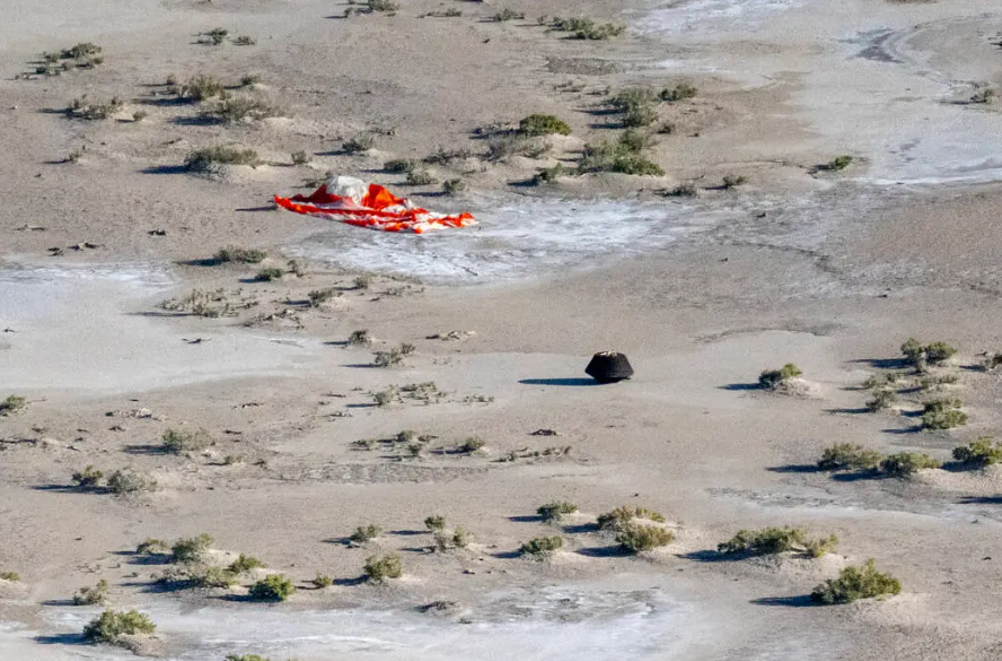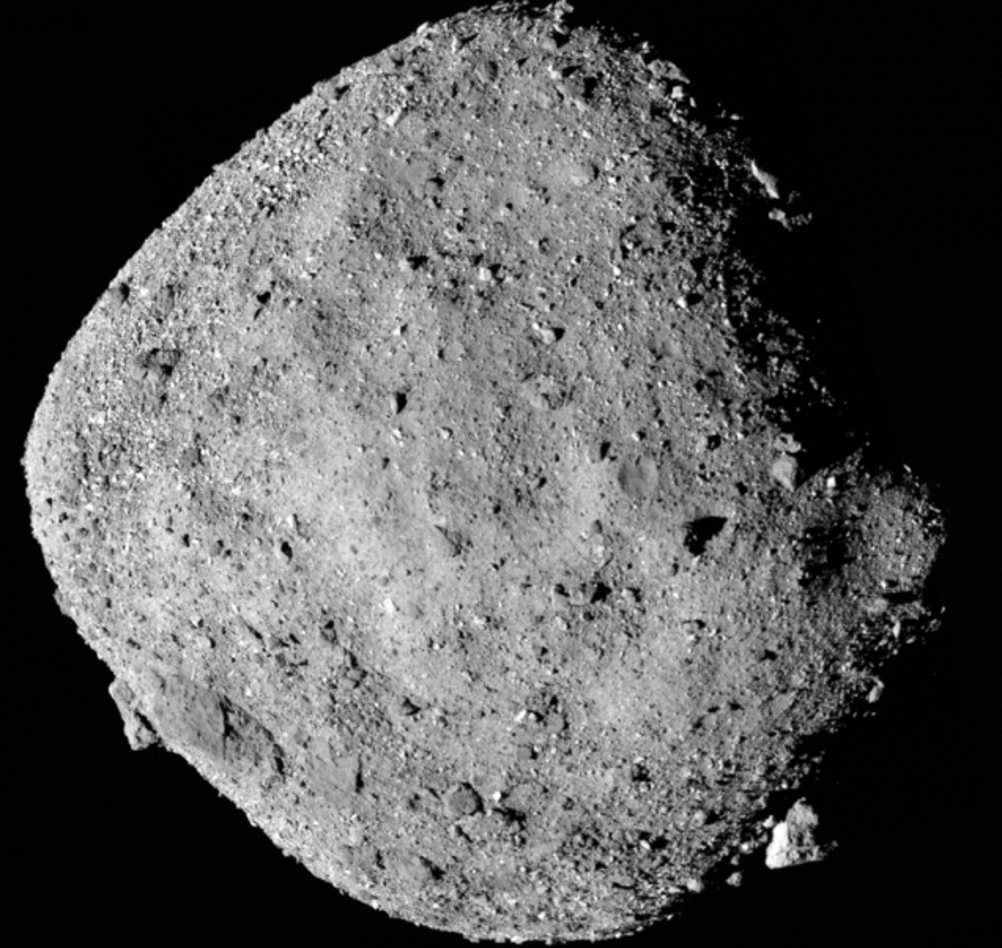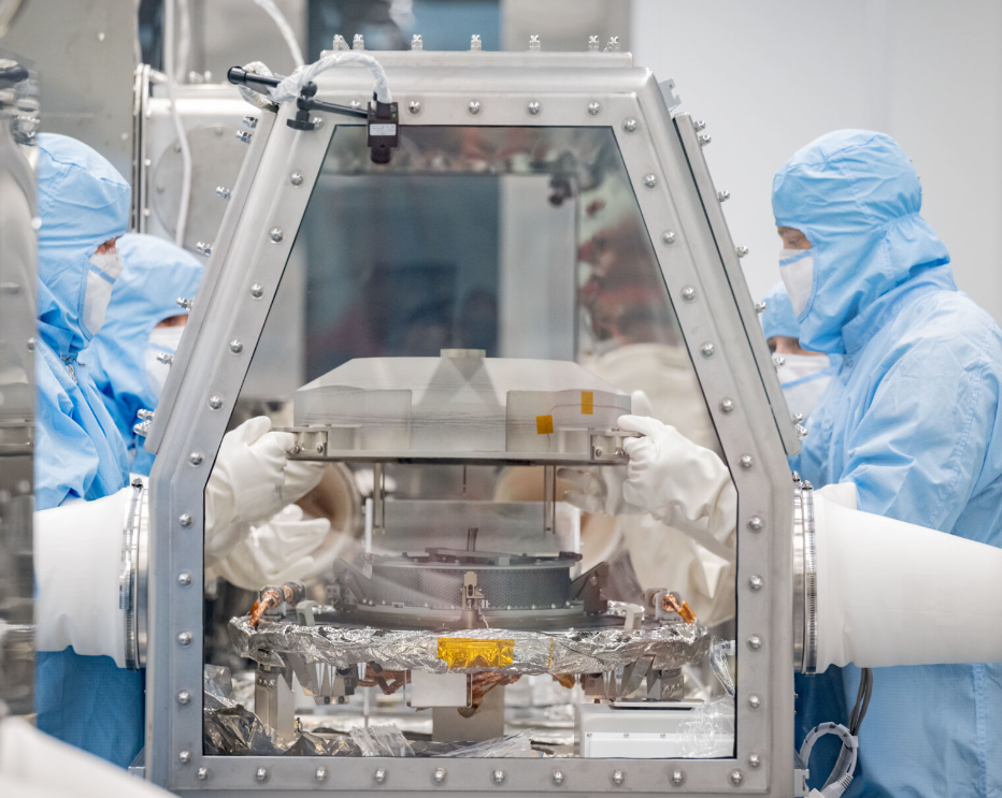It only takes a considered gaze up at our sky to be met with multiple, existential questions: how was our planet created? What lies beyond our Galaxy? Will we ever know how life on Earth began?
With modern science continually making new discoveries and theories, we are closer than ever before to offering answers to these questions. New experiments and missions are happening in the here and now, marking monumental breakthroughs in science, that will benefit generations to come.
One such mission, NASA’s OSIRIS-REx, reached a successful milestone last month, with the landing of a small capsule on Earth, containing a record-breaking amount of asteroid material which may hold tangible evidence of how our Solar System developed, and how life originated on this planet.
The OSIRIS-REx (Origins, Spectral Interpretation, Resource Identification, Security-Regolith Explorer) mission, first launched in 2016, successfully completed its first objective after seven years: to reach and map asteroid ‘101955 Bennu’, believed to be a “time capsule” from the birth of our Solar System, and return a sample of the asteroid back to Earth for study.
After orbiting the Sun twice, OSIRIS-REx flew past the Earth on September 24, 2023, and released the parachuted capsule, which then landed in the Department of Defence’s Utah Test and Training Range. The capsule is estimated to contain 250g of rocks and dust collected from Bennu. It is only the third time in history that material from an asteroid has been gathered and returned to Earth, and it is a record first for the US.

The Bennu sample should allow scientists to better understand the formation and evolution of the Solar System, the first stages of plant formation, and the source of organic compounds that make up all known life, and thus may answer the question of how life came to be on Earth.
NASA administrator, Bill Nelson, congratulated the entire team on “a picture-perfect mission – the first American asteroid sample return in history – which will deepen our understanding of the origin of our solar system and its formation.” As Bennu is potentially a hazardous asteroid, Nelson outlined the importance of understanding different asteroids that may come our way, through missions like this one.
Asteroids are often a challenge to approach, as those with diameters of 200m or less spin on their axes too quickly for a spacecraft to match their velocity, making it near impossible to touch down and collect samples of rocks and soil – material known as “regolith”. Bennu’s size and velocity, with a diameter of 492m, makes it approachable and rich in regolith, but the challenge still remains: how do you successfully rendezvous with an asteroid?
The spacecraft launched on September 8, 2016, from Cape Canaveral, Florida. It was released from its Atlas V rocket, initially deployed its solar arrays, and then spent two years travelling through space before gaining its first glimpse of Bennu in August, 2018. A grainy image was sent back to Earth, taken at a distance of 1.4 million miles, showing Bennu’s boulder-scattered surface, said to have formed 4.6 billion years ago.
By December 31, 2018, OSIRIS-REx entered orbit around Bennu at about 1.75 km (1.09 mi) to start its extensive remote mapping and sensing campaign for the selection of a sample site. This is the closest distance that any spacecraft has ever orbited a celestial object. A suite of instruments allowed a remote analysis of the asteroid – including REXIS (Regolith X-ray Imaging Spectrometer), which analysed the interaction of the sun's X-rays with the soil to identify chemical elements on the surface, as well as to locate sample extraction points.

After the asteroid was studied in detail, a rocky zone nicknamed ‘Nightingale’ was identified as the primary collection point. Rehearsals were performed before sampling, during which the solar panels were raised into a Y-shaped configuration, to minimise the chance of dust accumulation during contact. A flawless touchdown on October 21, 2020, lasted just six seconds and brought the real Touch-And-Go Sample Acquisition Mechanism (TAGSAM) into play.
TAGSAM is the robotic arm on the space probe, and the essential tool that collected the sample from Bennu. The 11ft (3.4m) long arm has three joints for articulation, to ensure that the sample could be collected despite Bennu’s low gravity. As the spacecraft approached Bennu, TAGSAM blasted a sample of pure nitrogen gas at the surface, to blast back dust and broken rock. The material was successfully pushed into a secure chamber, and the spacecraft then fired its thrusters to back away from the asteroid.
Once the sample was secured, the next stage of the mission was to successfully return it: on May 10, 2021, OSIRIS-REx began its journey back to Earth. Over two years later, on September 24, 2023, the spacecraft reached its release point of 63,000 miles from Earth, about one-third of the distance to the moon, when it dropped the contained sample. The capsule, around the size of a car tyre, hurtled through space for almost four hours. It entered Earth’s atmosphere at over 27,000mph; a heatshield and parachute slowed the descent, and the capsule touched down three minutes ahead of schedule.
Commenting on the landing, Dante Lauretta, OSIRIS-REx's principal investigator, said: “I cried like a baby in that helicopter when I heard that the parachute had opened and we were coming in for a soft landing. It was just an overwhelming moment for me. It's an astounding accomplishment.”
After revelling in the success of the return, recovery teams were quick to reach the capsule and transfer it to a temporary quarantine room at the nearby Dugway army base. If, as researchers predict, the asteroid material contains carbon compounds that may have been involved in the creation of life on Earth, then avoiding contamination with Earth’s present chemistry was of utmost importance.
Just four hours later, the capsule was placed safely under a pure nitrogen gas purge. The lab team disassembled the capsule, removing its heatshield and back cover but leaving the sample secure inside an inner canister.
On September 23, after a transfer to NASA’s Johnson Space Centre, the lid of the capsule was first cracked open. Scientists reported “black dust and debris on the avionics decks of the cannister”, which indicated that a sample was acquired.

Lauretta reminded everyone, on the day of the first look, that it was the tip of the iceberg, though, as he said: “That's just the dust that we can visibly see right now. The real treasure is inside TAGSAM, which we're not going to get access to until probably late next week, and that is going to be a very deliberative process to figure out what is the nature of that collection.”
NASA is planning a press conference on October 11, to give its first take on what has been returned: the amount, material and initial contained chemicals. Ashley King, UK scientist and part of the six-person ‘Quick Look’ team, predicted: “clay minerals - silicate minerals that have water locked up in their structure. Lots of carbon, so I think we'll probably see carbonate minerals, and maybe some things we call chondrules and also calcium-aluminium inclusions, which were the very first solid materials to form in our Solar System.”
Small specimens of the sample are to be distributed to associated research teams across the globe, and they hope to report back on a broad range of studies within two years.
Reflecting on the project, Lori Glaze, NASA’s director of planetary science, said: "One of the most important parts of a sample-return mission is we take 75 per cent of that sample and we're going to lock it away for future generations, for people who haven't even been born yet to work in laboratories that don't exist today, using instrumentation we haven't even thought of yet."
A great milestone of the mission has been met, but OSIRIS-REx’s task is not over: after releasing the capsule, the spacecraft extended its voyage to study an infamous near Earth asteroid, Apophis.
Now called OSIRIS-APEX, the spacecraft will not collect samples from Apophis, but study and map the asteroid for 18 months. Apophis, or ‘asteroid 99942’, was once thought to have a chance of smashing into Earth in 2068. Though no longer considered a threat, the asteroid’s next close approach, around 20,000 miles from Earth, on April 13, 2029, presents humanity with a great opportunity to add to prior asteroid sample-return missions, and learn more about asteroids and the evolution of our Solar System as a whole.
Other sample return missions
Whilst the OSIRIS-Rex mission is a first for the US, the Japanese Aerospace Exploration Agency (JAXA) have carried out two similar missions prior to NASA’s:
Hayabusa, a robotic spacecraft developed by JAXA, was the first mission to bring asteroid material back to Earth. Launched on May 9, 2003, Hayabusa rendezvoused with a small, near-Earth asteroid named ‘25143 Itokawa’, and studied its form. In November 2005, it collected samples of tiny grains of regolith, and returned the asteroid material to Earth on June 13, 2010. It was found that the dust from Itokawa was “identical to the material that makes up meteorites”, and thus the mission expanded our understanding of how different celestial objects were linked.
Hayabusa2, JAXA’s successor to Hayabusa, was launched on December 3, 2014, and rendezvoused with near-Earth asteroid ‘163173 Ryugu’, on June 27, 2018. It surveyed the asteroid for 18 months, and collected samples that were then returned to Earth on December 5, 2020. JAXA have extended the spacecrafts mission through to at least 2031; it is set to rendezvous with a small, rapidly-turning asteroid, ‘1998 KY’.
NASA and JAXA are sharing samples from each of their missions, for comparative study.











McMurtry Spéirling defies gravity using fan downforce
Ground effect fans were banned from competitive motorsport from the end of the 1978 season following the introduction of Gordon Murray's Brabham...